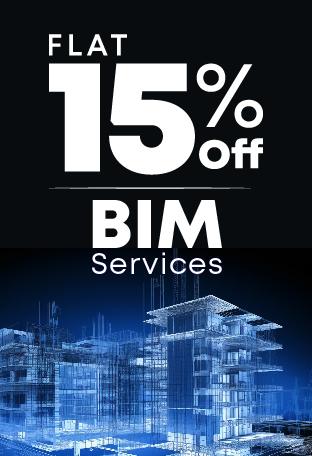Image by Palu Malerba
A common challenge faced by mid- to large-sized project managers is that not all team members use the same Building Information Modeling (BIM) application. This is where open BIM and closed BIM step in to save the day – different ways of approaching 3D BIM modeling.
We’ll cover what you need to know about open BIM so you can give your business an upgrade and streamline your methods.
Table of Contents:
Introduction: What is open BIM?
Open BIM refers to working with BIM while using open software, standards, and processes. It is widely considered a “future-proof” approach to collaboration in architecture, engineering, and construction.
This new methodology extends the benefits of “traditional” BIM by improving its usability, management, accessibility, and sustainability of digital data. It is a collaborative process that some might call “vendor-neutral.”
Information exchanged is not limited to geometric data but includes parametric data, the same way it would in closed BIM. Such parametric data might include:
- Quantity take-offs
- Construction phasing
- Specifications
- Cost estimation
- Material procurement
Note that open BIM has led to the development of several open standards and protocols. The most common ones currently include COBie and IFC.
- Open BIM is intended to increase efficiency and integration for all construction and design professionals by making the exchange of information easier.
- It helps to connect stakeholders like owners/clients, software vendors, and software users to develop buildings.
- The workflow ensures data accessibility, workflow transparency, and longevity.
- It follows the new ISO 19650 standards for managing and producing BIM workflows.
- It permits digital workflows based on formats such as COBie, gbXML, IFC, BCF and CityGML, which are vendor-neutral.
What is Closed BIM?
Closed BIM uses proprietary formats and requires important stakeholders to use the same project platform right through the building process. It involves many exchanges using BIM tools from the same provider, such as Autodesk. This is done to ensure interoperability and prevent issues with incompatibility.
For example, in a project, the structural engineer might use Revit Structure while the lead architect might use Revit Architecture. While no file conversion is needed in closed BIM, the process can be restrictive, since it only allows users already well-versed with specific BIM tools to collaborate.
However, this is not to say that closed BIM is inherently “worse” than open BIM. For instance, in many cases, different software solutions on the same project can lead to issues of inter-operability.
Furthermore, it comes with its own advantages, such as easy product integration, superior user experience, and specific features.
A Brief History
The home of open BIM is the buildingSMART alliance, an international organization that aims to encourage transformation in the built asset industry via the development and adoption of open, international standards. BuildingSMART also creates and maintains industry standards such as BCP, IFC, and bSDD.
The first open BIM standard was unveiled in 2006. Since then, open BIM has grown in popularity, and there are now several open BIM software tools available in the market.
There are many collaborators who contribute to the process, and you can contact bSI if you wish to get involved.
Benefits
Open BIM removes some traditional issues of BIM data, which is often constrained by proprietary vendor data formats, project phase, or discipline.
- All stakeholders have access to the same information, which leads to fewer misunderstandings and enhanced communication.
- You can use any software to produce, manage, and read data. This also means you can use specific software for every project requirement.
- Since open BIM software is usually free or affordable, your business can save a lot of money in the long run. Furthermore, since efficient teamwork is one of the major advantages of open BIM, your project is more likely to be completed on time.
- Better asset management.
- Access to BIM data created during design for the entire lifecycle of the building.
- By creating a common language and alignment thanks to following commonly defined work processes and international standards, the depth and breadth of BIM deliverables are extended.
- Users can develop new software apps, workflows, and technology automation thanks to a common data environment.
- Long-term data strategy for built assets thanks to the accessible digital twin.
What are the Principles of Open BIM?
- Interoperability is crucial to digital transformation
- Neutral and open standards need to be developed for interoperability
- Independent quality benchmarks are required for reliable data exchanges
- Open and agile data formats enhance collaboration workflows
- Flexibility of technology choice creates better value for stakeholders
- Long-term interoperable data standards safeguard sustainability
In many places, Autodesk rules supreme. Indeed, many times, when clients or laymen express their understanding of BIM, they tend to only talk about Revit. open BIM is not a concept they have been introduced to.
However, as the built asset landscape rapidly transforms with technological advancements, organizations must keep up or risk losing profits or developing buildings that do not meet contemporary standards.
Open BIM is one of the best ways to address the current challenges in AEC of transparency, coordination, and compatibility. Luckily, you don’t need to take a crash course in it because BluEntCAD is here to take that burden off you and let you focus on running your business.
We offer scan to BIM, Revit modeling, BIM clash detection, BIM consulting, and BIM training services to architectural companies, general contractors, design-build contractors, MEP engineers, civil & structural engineers, MEP sub traders, and HVAC sub traders. See what our clients have to say about us.
Are you ready to make your next construction project a success with BIM services? Contact us now!
Maximum Value. Achieved.


















 From 3D to 10D: A Simple Guide to BIM Dimensions
From 3D to 10D: A Simple Guide to BIM Dimensions  BIM to Digital Twin Journey: How Virtual Design and Construction (VDC) is the New Game Changer
BIM to Digital Twin Journey: How Virtual Design and Construction (VDC) is the New Game Changer  Beyond 4D BIM: The Game-Changing Impact of Predictive Analytics on Construction Timelines
Beyond 4D BIM: The Game-Changing Impact of Predictive Analytics on Construction Timelines  How AI BIM Modeling Shaping the Future of Residential Construction?
How AI BIM Modeling Shaping the Future of Residential Construction?